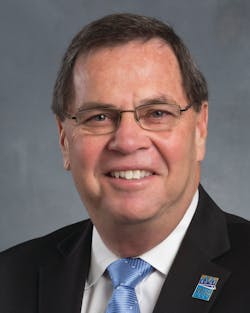Best Practices: Garnering Input on Railcar Design
Oakland, Calif.
Joel Keller
Board President, San Francisco Bay Area Rapid Transit District (BART)
Riders spoke and BART listened when designing its new Fleet of the Future train cars. Public input has been an essential part of BART’s design process. Since the project began in 2009, BART has been collecting and analyzing feedback on proposed design elements and amenities to help guide the design process of BART’s next generation of train cars.
From old school outreach such as station banners, television, print and radio news stories to building a strong web presence and using social media and email alerts, BART used a blend of traditional and digital methods to help create buzz and excitement for numerous events including seat labs, a wooden mock up and the final model car. Each event included soliciting public feedback from surveys, and online comment forms on the Fleet of the Future.
Design elements which came from rider feedback include: higher seats, wider aisles, improved "next stop" information, and more handholds.
At press time, over 28,000 people have offered input to help BART and its new train car builder, Bombardier Transportation, make design decisions, including over tens of thousands of people who visited the latest model of the train interior at various sites this spring.
From April 16 to May 9, BART invited the public to experience what the new fleet will look and feel like during an unprecedented outreach effort with 10 events held all over the Bay Area. Bombardier built a life-sized model of the interior and exterior of approximately half of a train car for public viewing. People got to walk through the model train car, and more importantly, provide feedback on the new modern features. The 2014 model train car tour was the final review of the train car design before manufacturing and testing begin.
By popular demand, the new cars will be:
- Quieter: “micro-plug” doors will help seal out noise
- Cooler: cooling systems will distribute air directly to the ceilings, making it more comfortable for standees on hot days
- Comfortable: padded seats will have lumbar support and will be covered with wipeable fabric for ease of cleaning
- Easy to use: routes will be color coded like the BART system map, and next stop information will be readily available via automated announcements and digital screens
Detroit, Mich.
Sommer Woods, Director of External Relations, M-1 Rail
Community engagement has been a vital component for the M-1 Rail Streetcar Project since day one. Historically, Detroit once had 910 streetcars in operation, which were eventually phased out as we transitioned to become the Motor City. Today, Detroit joins many other cities across the United States that are reintroducing the streetcar into their transportation networks.
As a community relations team, it’s our role to help various stakeholder groups envision the extraordinary possibilities the streetcar brings to Detroit’s Woodward corridor, ensure people understand the impacts of construction to their daily lives and help change the conversation about transportation in Detroit.
One of our first community outreach efforts was to establish two advisory councils: First, a business advisory council, which is composed of businesses and organizations along the Woodward corridor that will be impacted by construction, and also eventually reap direct economic benefit from the streetcar once in operation. The second was a community advisory council composed of residents, visitors and various community organizations that all have vested interests in the corridor.
Through monthly meetings with each of these groups, we have been able to gain valuable insight regarding our current outreach efforts and project ideas, gauge attitudes towards the project and build relationships with business and community stakeholders whose support is integral to our project.
In addition to our advisory councils, we have also implemented a digital outreach strategy that is essential to reaching those who consume their information online.
It begins with our website where information about construction, meetings and general information can be found. We use our blog to share news and updates, which are then filtered out through our social media channels — Facebook and Twitter. Social media monitoring is also an important component, as we strive to answer all questions in a timely manner with as much information as we can offer.
We have also implemented a monthly electronic newsletter as well as a quarterly print newsletter that is distributed to community groups and other stakeholders along the 3.3-mile route where the streetcar will operate. These digital and print pieces help us with announcements and meetings, broadening our reach to ensure that all stakeholders are able to gain information and access to our organization and project.
Additionally, we have also implemented a hotline for questions and emergencies, which is monitored 24/7.
It is with the tactics outlined here, and those that have yet to be developed, that we make important connections, establish community understanding of the project and create the lasting relationships with Detroiters that will help us to realize the possibilities that come with a streetcar while changing the conversation about transportation in Detroit.
